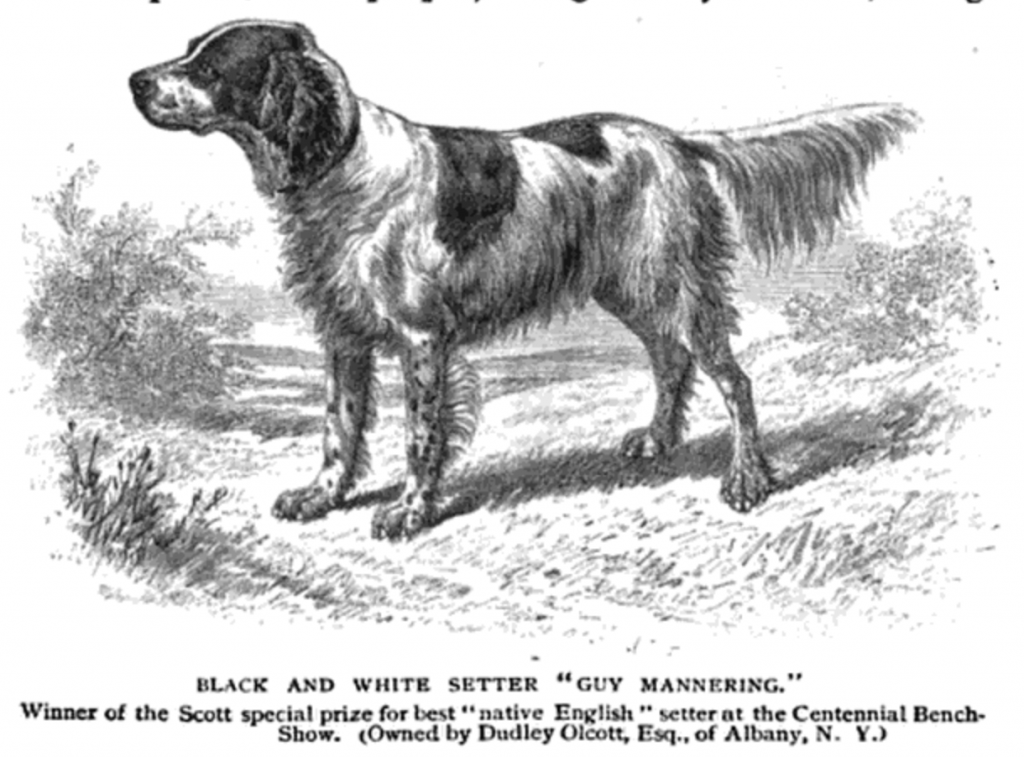Dudley Olcott was a member of the Olcott family that owned the Ten Broeck mansion, Arbor Hill. Born in 1838, he attended the Albany Academy and took a course in civil engineering at Rensselaer Polytechnic Institute, and then joined the family business (well, one of them) as an assistant cashier at the Mechanics’ and Farmers’ Bank, and then became cashier before ascending to succeed his father Thomas as president of the Mechanics’ and Farmers’ Bank in 1879. During the Civil War he was a captain in the Twenty-fifth New York Volunteers, made a brevet major and then a lieutenant colonel. He was a member of the board of governors of the Albany Hospital, president of the Albany Cemetery Association, and a trustee of the Home for Aged Men, the Albany Orphan Asylum, and the Albany academy for Girls. He was president of the Park Commission of Albany, enlarging and improving Washington Park. He vacationed every year by going salmon fishing on the Ristigouche River in Canada.
Yes, yes, that’s all fascinating. But the reason we’re talking about Dudley Olcott today is because of a dog. In the 1876 Centennial Exhibition in Philadelphia, Olcott received an award for showing a Native English Setter Dog. The dogs were shown September 4-8. According to “The Illustrated History of the Centennial Exhibition,” setters were “more largely represented than any other variety of the dog race, and there are many fine, highly-bred animals here. . . Many English setters are exhibited, and some of them not only show the points of good dogs, but have pedigrees of remarkable extent.” In the “Reports on Awards,” Olcott was noted for his American-bred setter dog Guy Mannering, over one and under two years old, which won the Scott special prize for best native English setter at the Centennial Bench Show.
An article in Scribner’s Monthly magazine in November 1876, “Some American Sporting Dogs,” In discussing a variety of breeds, the author specifically described Dudley Olcott’s dog:
As a specimen of the high-bred dog from imported stock, I have chosen “Guy Mannering,” bred by Charles H. Raymond, Esq., of Morris Plains, N.J. This dog is the produce of “Pride of the Border” and “Fairy,” – a pair of celebrated Laveracks, imported by Mr. Raymond from the kennels of the gentleman whose name is given to the strain and who has bred them in purity for more than fifty years.
The setters known as the native English (a misnomer, as native American would be more proper) are generally in color, orange and white, lemon and white, black and white, red and white, liver-colored and white, or all black; although they are to be found of a liver and tan, or in fact of almost any known combinations of the colors mentioned except those of orange and lemon and black.
The writer then went into extreme detail on how such setters are judged in this country, which you can peruse yourself if you care to. Thanks to the Google, we can pretend that we knew that “Guy Mannering (or, The Astrologer)” was a novel by Sir Walter Scott, so the name was less random than it may have seemed. The article only identified the breeder, but the cutline for the illustration of Guy Mannering clearly identified him as Olcott’s dog.
As you can see, he was a good dog, Brent.


Leave a Reply